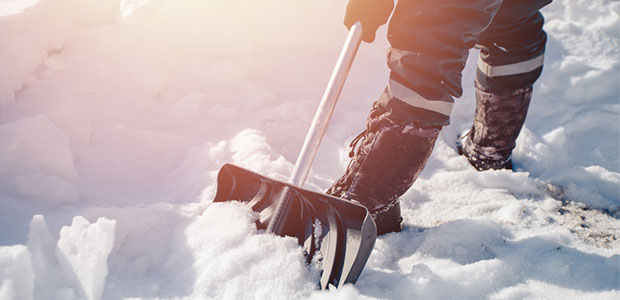
Winter Hazards and Cold Stress: How to Protect Workers This Winter
With winter comes a whole new set of risks people should be aware of on and off the job. OSHA has outlined a handful of winter hazards and tips on how to protect workers as the seasons change and winter approaches.
As temperatures drop, seasonal risks emerge, but work must go on. With cold weather comes all kinds of safety hazards like hypothermia, frostbite, dangerous driving conditions, and heavy snow equipment. That’s why OSHA compiled a handful of tips for a number of common winter hazards so workers can stay safe in the upcoming months.
OSHA’s Winter Weather page lists a number of winter hazards and situations: winter driving; work zone traffic safety; stranded in a vehicle; shoveling snow; using powered equipment like snow blowers; clearing snow from roofs and working at heights; preventing slips on snow and ice; repairing downed or damaged power lines; working near downed or damaged power lines; and removing downed trees.
The OSHA Quick Card for Protecting Workers from Cold Stress addresses common medical risks for workers in winter situations, too: hypothermia, frostbite, and trench foot. Those most at risk for hazards like these are employees working in cold temperatures and increased wind speed like workers in freezers, outdoor agriculture, and construction.
Winter driving. Many employees drive as part of their jobs, and when road conditions are hairy, their lives are at risk. Employers cannot control roadway conditions, but they can promote safe driving behavior by ensuring workers: recognize the hazards of winter weather driving on snow/ice; are properly trained in winter weather conditions; and are licensed for the vehicles they operate.
Vehicles also need to be inspected to make sure they are as safe as they can be. Employers should ensure the following are regularly inspected: brakes, cooling system, electrical system, engine, exhaust system, tires, oil and visibility systems.
Vehicles should also have the following items in an emergency kit: cellphone or two-way radio, windshield ice scraper, snow brush, flashlight with extra batteries, shovel, tow chain, traction chain, traction aids, emergency flares, jumper cables, snacks, water, road maps, blankets, and a change of clothes.
Work zone traffic safety. Workers being struck by vehicles or mobile equipment lead to work zone fatalities and injuries every year. Drivers may skid, or lose control of their vehicles more easily when driving on snow or ice. That’s why it’s important to properly set up work zones with traffic controls identified by signs, cones, barrels, and barriers, to protect workers. Workers exposed to vehicular traffic should also wear high visibility vests at all times.
Stranded in a vehicle. If you are stranded in a vehicle, stay in the vehicle and call for emergency assistance if needed. Walking away from your vehicle and looking for assistance could mean you get lost in blowing or drifting snow. Turn on the vehicle’s engine for about 10 minutes each hour and run the heat to keep warm.
It’s also important to beware of carbon monoxide poisoning—keep the exhaust pipe clear of snow, and open a downwind window slightly for ventilation.
Shoveling snow. Shoveling snow is a necessary evil: it’s important for safety and functionality, but it’s also strenuous and tasking on the body. There is potential for exhaustion, dehydration, back injuries, or heart attacks. During snow removal, make sure you take frequent breaks in warm areas, scoop small amounts of snow at a time, and push the snow instead of pushing it when possible. To avoid back injuries: keep the back straight, lift with the legs, and do not turn or twist the body.
Using powered equipment like snow blowers. Powered equipment, like snow blowers, should be properly grounded to protect workers from electric shocks or electrocutions. When performing maintenance or cleaning, make sure the equipment is guarded and disconnected from power sources.
Refer to the OHSA Winter Weather page to read some tips on clearing snow from roofs and heights; preventing slips on snow and ice; and working on or removing downed power lines or trees.
To avoid medical problems like frostbite and hypothermia, there are a couple things you can do:
- Do minor exercises to maintain good blood circulation in your body.
- Clap hands and move arms and legs occasionally.
- Try not to stay in one position for too long.
- Stay awake—you will be less vulnerable to cold-related health problems.
- Use blankets, newspapers, maps, and even the removable car mats for added insulation.
- Avoid overexertion since cold weather puts an added strain on the heart.
- Unaccustomed exercise such as shoveling snow or pushing a vehicle can bring on a heart attack or make other medical conditions worse.
Hypothermia, frostbite, and trench foot (or immersion foot) are all likely risks in cold weather. Symptoms of hypothermia include: shivering stops, confusion, slurred speech, heart rate/breathing slow, and loss of consciousness. Symptoms of frostbite include: numbness, reddened skin develops gray/white patches, feels firm/hard, and may blister. Symptoms of trench foot include: redness, swelling, numbness, and blisters.
What you wear also can affect your safety in winter weather conditions. Dressing improperly, wearing wet clothing, or keeping skin wet can greatly increase your changes of getting hypothermia, frostbite, or trench foot.
Luckily, there are ways employers can keep workers safe from hazards like these. Employers should train employees on cold stress hazards and prevention, provide engineering controls like radiant heathers, gradually introduce workers to the cold, monitor workers, and schedule breaks in warm areas.